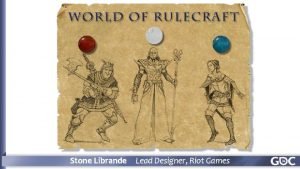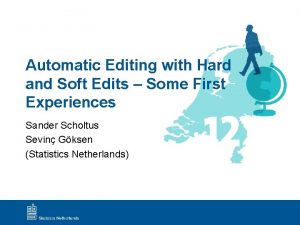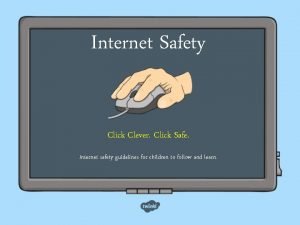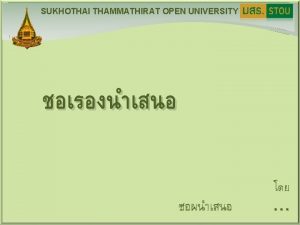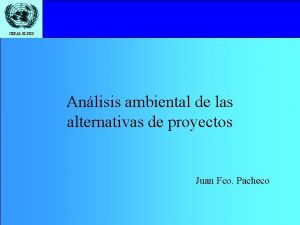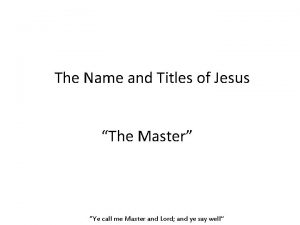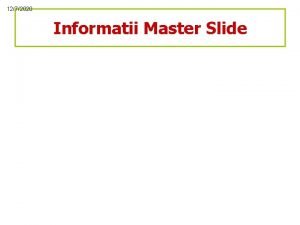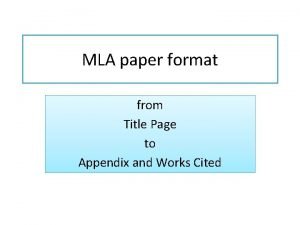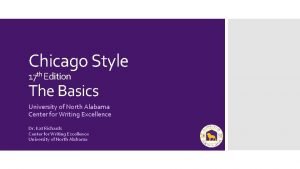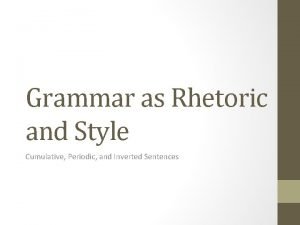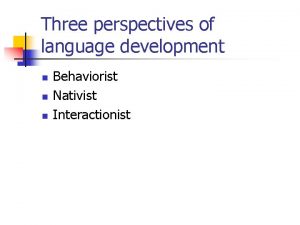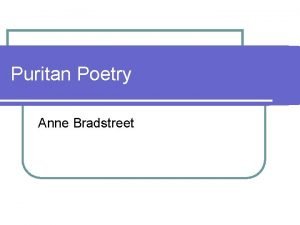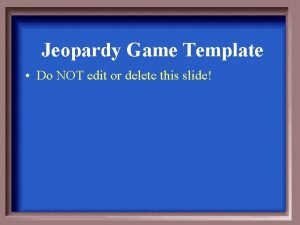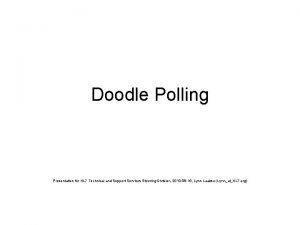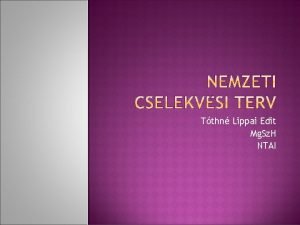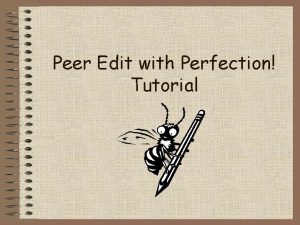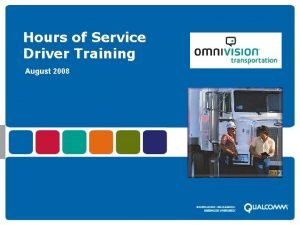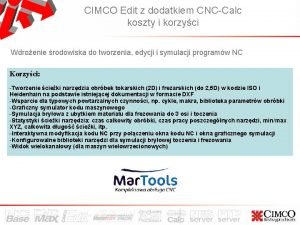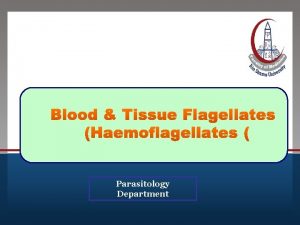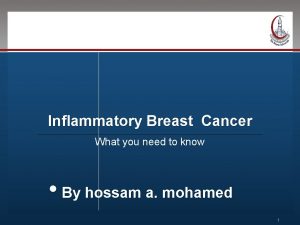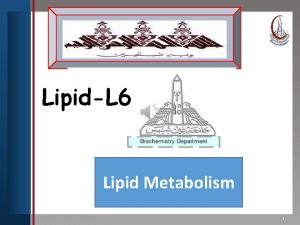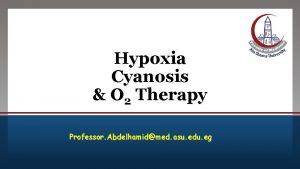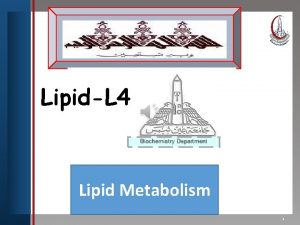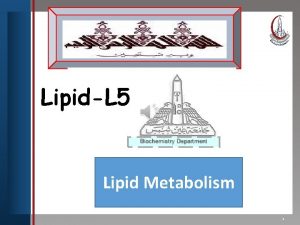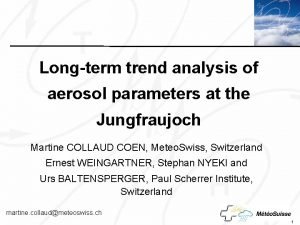Click to edit Master title style Click to








































- Slides: 40

Click to edit Master title style • Click to edit Master text styles – Second level • Third level – Fourth level » Fifth level Network events – GCSE English – Spring 2016

Click to edit Session Agenda Master title style • Click to edit Master text styles • AO 4: Evaluation – workshop and discussion – Second level • Third level • Spoken Language Endorsement – looking at – Fourth level examples » Fifth level • Active Teach: Introduction to the free resources • Questions and ideas for next network event

Click to edit Master title style • Click to edit Master text styles – Second level • Third level – Fourth level » Fifth level AO 4: Evaluation

Click to Aims and edit objectives Master title style 1. • Examine the definition of evaluation Click to edit Master text styles – Second level 2. Interpret the assessment objective and • Third level requirements of students, including relationship – Fourth level with AO 2 » Fifth level 3. Review evaluation in the question paper and mark scheme 4. Look at ways of supporting AO 4 in the classroom

Click to edit Activity One. Master title style Evaluate these cars in 1 minute • Click to edit Master text styles – Second level • Third level – Fourth level » Fifth level

Activity One Click to edit Master title style In the activity, you: • Click to edit Master text styles – Second level • made a judgement, assessed, • Third level appraised – Fourth level • may have been positive or » Fifth level negative • will have been reflecting on your own needs or those of other audiences

Evaluation in AO 4 Click to edit Master title style • Click to edit Master text styles Command Level – Second level • Third level Evaluate texts critically and support this with – Fourth level » Fifth level appropriate textual references Evidence

Click to edit Master title style • Click to edit Master text styles – Second level • Third level – Fourth level » Fifth level

AO 4 versus AO 2 Click to edit Master title style Command • Click to edit Master text styles AO 4: Evaluate texts critically and support this – Second level with appropriate textual references • Third level – Fourth level » Fifth level AO 2: Explain, comment on and analyse how writers use language and structure to achieve effects and influence readers, using relevant subject terminology to support their views Command

AO 4 versus AO 2 Click to edit Master title style Level • Click to edit Master text styles AO 4: Evaluate texts critically and support this – Second level with appropriate textual references • Third level – Fourth level » Fifth level AO 2: Explain, comment on and analyse how writers use language and structure to achieve effects and influence readers, using relevant subject terminology to support their views Level

AO 4 versus AO 2 Click to edit Master Evidence title style • Click to edit Master text styles AO 4: Evaluate texts critically and support this appropriate textual references – with Second level • Third level – Fourth level AO 2: Explain, comment on and analyse how » Fifth level writers use language and structure to achieve effects and influence readers, using relevant subject terminology to support their views Evidence

AO 4 Question Click to edit Master title style On both papers the question will always follow the same format: • Click to edit Master text styles Paper 1 – Question 4 – Second level • Third level – Fourth level » Fifth level

AO 4 Question Click to edit Master title style Paper 2 – Question 6 • Click to edit Master text styles – Second level • Third level – Fourth level » Fifth level

AO 4 Questions and Mark Click to edit Master title style Scheme • Click to edit Master text styles • Paper 1 assesses AO 4 in Question 4 – Second level • Paper 2 assesses AO 4 in Question 6 • Third level • The format of the questions will always follow the – Fourth level same pattern » Fifth level • The questions always refer to only one extract and the whole extract • Questions are always worth 15 marks • The mark scheme is identical for both questions with five levels

Click to. Started: edit Master title style. AO 4 Getting Approaching • Click to edit Master text styles Students should: – Second level • Third level – Fourth level 1. Highlight the key words of the question – » Fifth level command, level, evidence 2. Know the three bullets of the mark scheme – writing, opinion, reference 3. Focus on examining SITE – Setting, Ideas, Theme, Events

Using theedit Field of White Click to Master title. Space style as a ‘SITE’ • Click to edit Master text styles A useful technique to start off evaluation is ‘Field of – Second level White Space’ • Third level – Fourth level » Fifth level 1. Take the text and put it in the centre of an A 3 or A 4 sheet 2. Use SITE prompts to encourage evaluative comment

Fieldto ofedit White Space Click Master title style Setting: To what extent is the setting tense? • Click to edit Master text styles Theme: What theme is being presented? – Second level • Third level – Fourth level » Fifth level Ideas: What ideas are presented here and how tense are they? Events: To what extent are the events tense?

Field of White Space Click to edit Master title style • Click to edit Master text styles – Second level • Third level – Fourth level » Fifth level

Crafting an extended response Click to edit Master title style Once the full text has been examined, students could be encouraged to work with the whole extract using a skim, scan, select technique. This could use a table, map, diagram, for example: • Click to edit Master text styles – Second level • Third level What is presented How well is this presented? – Fourth level Setting: » Fifth level Ideas: Theme: Events: Evidence

Crafting an extended response well is this presented? Evidence Click to. How edit Master title style What is presented Setting: • Ideas: Evaluate how the choice of setting Click to edit Master text styles affects the work's theme and mood – Second level For example, the people in the text: main and secondary – Fourth level characters and their roles and » Fifth level purposes • Third level Theme: What is the writer is trying to communicate overall? Are there ‘sub’ themes? Events: Is there an opening, climax, resolution? Where these are in the plot's development has a role in the author's success in conveying meaning.

Activity Two Click to edit Master title style Getting Started - Interpreting the Mark • Click to edit Master text styles Scheme – Second level • Third level Examine the bullet points of the mark scheme, – Fourth level » Fifth level highlighting only one or two key words from each

Interpreting the mark scheme Click to edit Master title style Level 1 Description, limited assertions and references • Click to edit Master text styles Level Comment, straightforward opinions with limited judgements, valid but – 2 Second level underdeveloped references • Third level – Fourth level Level 3 » Fifth level Explanation, informed judgement, appropriate and relevant references Level 4 Analysis, well-informed and developed critical judgement, appropriate, detailed and fully supportive references Level 5 Evaluation, sustained and detached critical overview and judgement, apt and discriminating and persuasive references.

Assessing the level of opinion Click to edit Master title style Level Example • Click to edit Master text styles 1: Limited assertion – Second level ‘I think he builds tension well. ’ • Third level – Fourth level 2: Straightforward opinion ‘the tension begins to rise and it goes from very calm to very tense. ’ 3: Informed judgement ‘The section from the extract doesn't contain the object placed beneath the flooring. This is building tension in many ways because the reader would want to know what it is and read on. Throughout this extract two policemen enter the scene wanting to examine anything suspicious. They all sat in the chamber where the body lay. ’ » Fifth level

Assessing the level of opinion Click to edit Master title style Level Example • Click to edit Master text styles 4: Well-informed and ‘The vocabulary used suggests the idea of prizes – Second level developed critical and winning, e. g. 'treasure', 'triumph'. The • Third level judgement writer makes it seem like the narrator is just – Fourth level playing a game or a sport which comes up as a » Fifth level theme in the piece and helps to build tension. He thinks he has won. The first four paragraphs make it seem like everything is just covering up like the narrator planned. The last paragraph where he is caught doesn't have much of a transition from previous paragraphs. The small amount of transition then leads you to a burst of tension. The game is over. ’

Assessing the level of opinion Click to edit Master title style Level Example • Click to edit Master text styles 5: Sustained and ‘The theme of the extract is hiding a secret and the detached critical guilt that this can lead to. Because of this the – Second level overview • Third level tension is developed through the piece, and very quickly builds up in a short space of time. Since the – Fourth level » tension is so condensed it has more effect. The idea Fifth level of a secret is shown at the start of the extract and the way that this is described by the writer develops tension. The language used avoids description of whatever is being hidden, and because of this the reader feels a sense of intrigue initially. He writes 'deposited all between the scantlings', but 'all' is not specific. The use of the narrator's reflection on how well he has done to hide the item moves the reader from intrigue to concern. ’

Evaluative language Click to edit Master title style There is no prescribed examples of • Click to edit Master text styles language that can be used – Second level • Third level – Fourth level There should be judgement – think Ofsted! » Fifth level

Evaluative language Click to edit Master title style Highly imaginative Highly creative High standard High quality Exquisite Perfect Extensive Outstanding • Click to edit Master text styles – Second level Fine • Third level Superior – Fourth level » Fifth level Excellent Innovative Inventive Exceptional Superb Superior Exemplary Accomplished Masterly Very good

Evaluative language Click to edit Master title style Worthwhile Beneficial Used well Pleasing Valuable • Click to edit Master text styles – Able Second level Thorough Useful Powerful Sufficient • Third level – Fourth level » Fifth level Acceptable Useful Solid Sound Valid Average Responsive Satisfactory Effective Appropriate Suitable Efficient Competent Relevant Adequate

Evaluative language Click to edit Master title style • Click to edit Master text styles Incompetent Inefficient – Second level Unable Weak • Third level – Fourth level » Fifth level Poor Incorrect Unsuitable Invalid Lively Comprehensive Successful Skilful

Using evidence Click to edit Master title style • There is no requirement for a set number • of references/examples to be offered Click to edit Master text styles – Second level • Third level • Textual references and/or direct – Fourth level » Fifth level quotations can be used, but in AO 4 students should ONLY use them to inform the evaluation, not to analyse language (this is done in AO 2)

Click to edit Master title style • Click to edit Master text styles – Second level • Third level – Fourth level » Fifth level Spoken Language Endorsement

3 Key Aspects of a Speech Click to edit Master title style Event: • Click to edit Master text styles • Ideational aspects (what is said) – Second level • Third level • Interpersonal aspects (how it’s said) – Fourth level » Fifth level • Textual aspects (the form chosen to say it) From Wilkinson and Berrill, drawing on M. A. K. Halliday’s work

What is required for the SLE? Click to edit Master title style • Students are required to complete one task – a formal presentation followed by listening to, and answering, • questions Click to edit Master text styles – Second level • The presentation and questions need to be approximate • Third level 10 mins in length – Fourth level » Fifth level • The students are marked using the pass, merit, distinction grids. Students can be marked as unclassified if they do not complete the task or do not meet the requirement for a pass • The marks are submitted at the end of the course along with a sample of audio-visual recordings of 30 students (if the cohort is over 30).

Activities Click to edit Master title style • What level would you award Jibreel? What were the key strengths of his presentation? Are there any • improvements that could be made? Click to edit Master text styles – Second level • What level would you award Mofaiza? What were the • Third level key strengths of her presentation? Are there any – Fourth level improvements that could be made? » Fifth level • What level would you award Beth? What were the key strengths of her presentation? Are there any improvements that could be made?

Jibreel Click to edit Master title style • Jibreel has chosen a complex topic and uses a sophisticated repertoire and range of vocabulary. He speaks with few notes and demonstrates extensive knowledge. The presentation has clear organisation. His relaxed but enthusiastic approach to the topic and importance clearly engages the audience. • its. Click to edit Master text styles • He listens carefully to questions, responding confidently and appropriately. The teacher Second level asks a– challenging question with allows Jibreel to elaborate further on his ideas. • Third level His spoken Standard English is assured and flexible. It should be noted that he uses – Fourth level quite a large number of Attitudes to such use vary from individual to individual, » fillers. Fifth level but it needs to be made clear here that fillers are common in speech and that use of them is not an issue within the framing of these criteria, and within the context of his presenting to colleagues. • • • It is worth noting two points in particular which help him achieve against the criteria: he speaks on a complex topic which requires, by definition a sophisticated ideas he is helped by the teacher’s question which enables him to elaborate his ideas. Who asks the questions, and the level of challenge of the questions, needs to be considered by teachers and candidates when setting up the presentation.

• Mofaiza Click to Master title Mofaiza presents us with edit some issues around how we fairly assess style students for whom English is not their first language. She has lived in East London for 18 months and we are seeing progress here in her English, but not completion. At this stage there are some particular issues with spoken Standard English grammar, most noticeably around the more • Click to edit Master text styles complex grammatical functions delivered by prepositions and adverbs. – Second level • She has planned the structure of her talk but unsurprisingly it comes across as slightly • Third level stilted as she is not yet fully using Standard English. There are though some examples of a – Fourth level competent range of vocabulary. She makes relevant and extended contributions usually » Fifth level being able to voice her ideas cogently. She clearly has presence, and so meets audience needs, but at times loses some coherence at sentence level. • She listens carefully to questions and provides appropriate responses. • It is clear that Mofaiza is making progress with her English, and the content of her talk shows that she has ambitions to succeed. She will continue to do better than this current level of performance, and ideally would be assessed at a later time. As things stand here, though, we can say that she generally uses spoken Standard English and that in an overall sense she is intelligible.

• Beth to edit Master style Beth. Click takes on a challenging topic, and presents atitle strong sense of her own personal feelings about the issues she addresses. Her talk is clearly organized, and indeed she marks steps in her evolving argument, but the organization at a • Click to edit Master text styles micro level is slightly less effective because of the long speech sentences she uses, often linked by ‘and then’. Although she has a notebook, she is actually – Second level speaking without the support of an outline structure that Charlotte had. It might • Third level have helped her if she had one too. – Fourth level » Fifth level • She has a range of vocabulary (‘aspiring to marry’) but is not always sophisticated in her expression (‘other sorts of romance books like that’) She listens to questions and responds formally with some elaboration of further ideas. She demonstrates confident use of spoken Standard English. • There are times when Beth hits the descriptors for Distinction, especially in her engagement with the audience, but she does not do so in all areas, especially the strand which refers to vocabulary and structure.

Marking Criteria Click to edit Master title style Merit Distinction Pass In addition to the general criteria, to be awarded a Pass a criteria, to be awarded a Merit Learner's performance in his or a Learner's performance in his her spoken language or her spoken language assessment must meet all of the following criteria – • expresses straightforward • expresses challenging • Third level ideas/information/ feelings, ideas/information/ feelings – Fourth level • makes an attempt to using a range of organise and structure his » Fifth level vocabulary, or her presentation, • organises and structures his • makes an attempt to meet or her presentation clearly the needs of the audience, and appropriately to meet and the needs of the audience, • listens to • achieves the purpose of his questions/feedback and or her presentation, and provides an appropriate • listens to response in a straight questions/feedback forward manner. responding formally and in some detail. • Click to edit Master text styles – Second level In addition to the general criteria, to be awarded a Distinction a Learner's performance in his or her spoken language assessment must meet all of the following criteria – • expresses sophisticated ideas/information/feelings using a sophisticated repertoire of vocabulary, • organises and structures his or her presentation using an effective range of strategies to engage the audience, • achieves the purpose of his or her presentation, and • listens to questions/feedback, responds perceptively and if appropriate elaborates with further ideas and information.

Click to edit Master title style • Click to edit Master text styles – Second level • Third level – Fourth level » Fifth level Active. Teach: Free support

Click to edit Contact information Master title style English Subject Advisor, Clare Haviland: • Click to edit Master text styles • teachingenglish@pearson. com – Second level • Third level • Tele: 0844 372 2188 – Fourth level » Fifth level • http: //www. edexcel. com/Subjects/English/Pages/Default. aspx • English forum look at and participate in: www. community. edexcel. com/english/default. aspx • Twitter: www. twitter. com/English. Sub. Adv • www. edexcel. com/learningforabetterfuture
 Click to edit master title style
Click to edit master title style Click to edit master title style
Click to edit master title style Click to edit master title style
Click to edit master title style Click to edit master title style
Click to edit master title style Hard edits
Hard edits Master title style
Master title style Master title style
Master title style Cyber safety
Cyber safety Clever click
Clever click Click clever click safe
Click clever click safe Internet safety
Internet safety Click to add title
Click to add title Click to add title
Click to add title Add your title here
Add your title here Master title
Master title Daskolos
Daskolos What is a slide-title master pair
What is a slide-title master pair Prefatory and supplementary part of proposal
Prefatory and supplementary part of proposal Title title
Title title Mla appendix images
Mla appendix images Top right corner of the page
Top right corner of the page Apa standard reference
Apa standard reference Periodic style vs running style
Periodic style vs running style Informal writing style examples
Informal writing style examples Nnn speech
Nnn speech Block style with open punctuation
Block style with open punctuation Puritan poetry
Puritan poetry Writing style examples
Writing style examples Quick edit+
Quick edit+ Jeopardy edit
Jeopardy edit Doodle poll login
Doodle poll login Edit
Edit Yang merupakan modus edit, kecuali
Yang merupakan modus edit, kecuali Please feel free to edit
Please feel free to edit H ntai
H ntai Cimco edit cena
Cimco edit cena Frivaldszky edit
Frivaldszky edit Kriston edit
Kriston edit Peer editing meaning
Peer editing meaning How to edit logs on qualcomm
How to edit logs on qualcomm Cimco dnc
Cimco dnc


